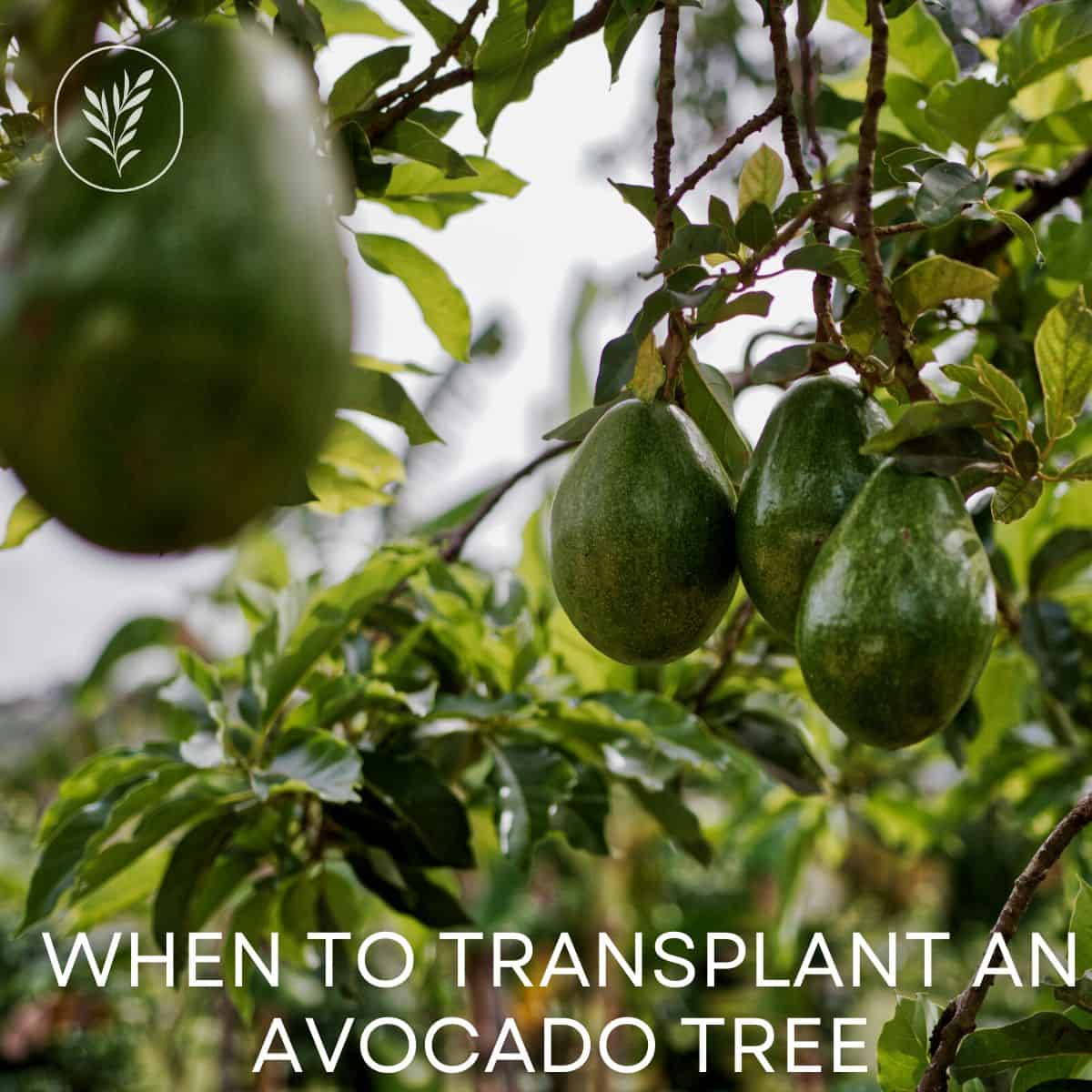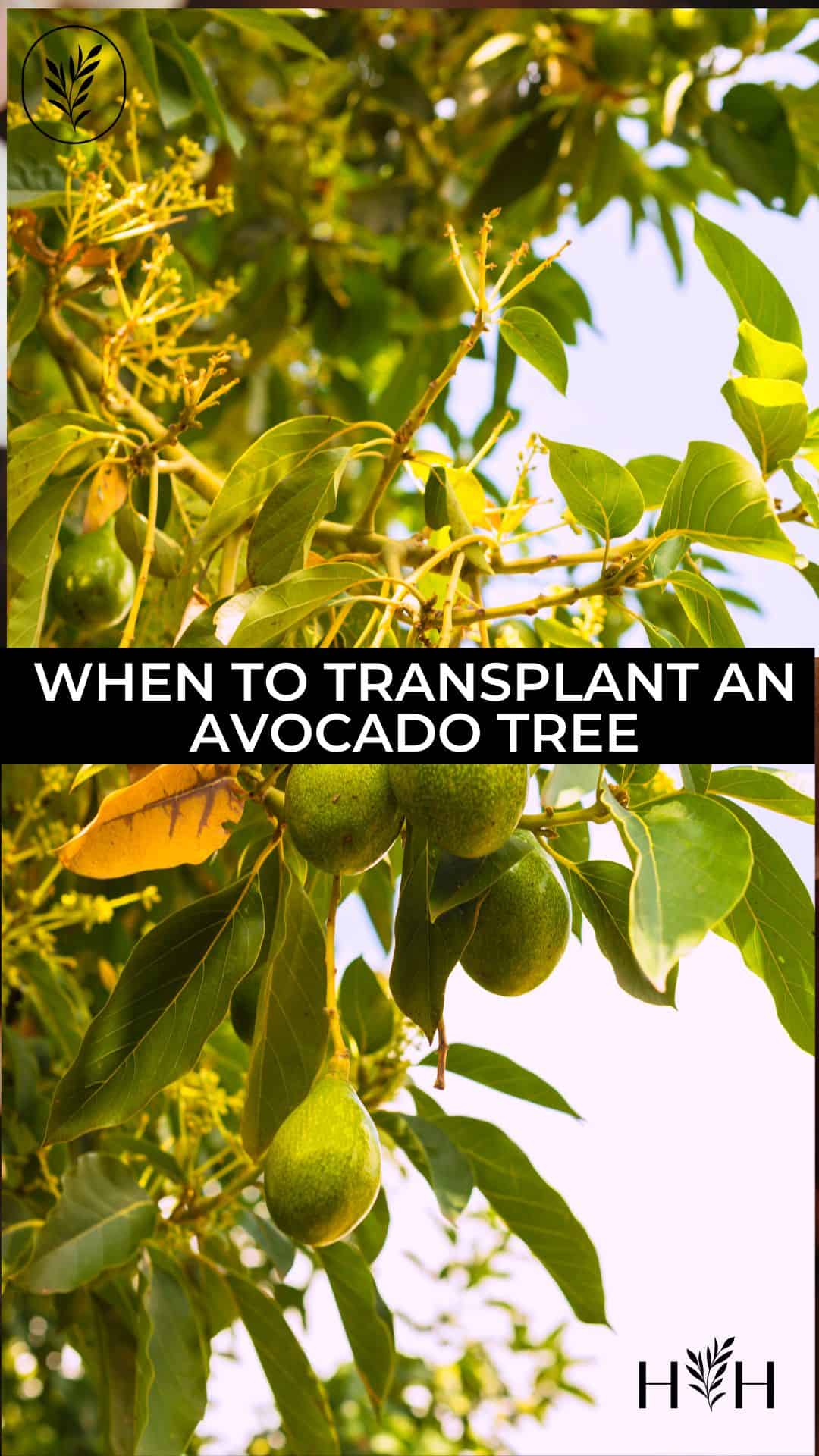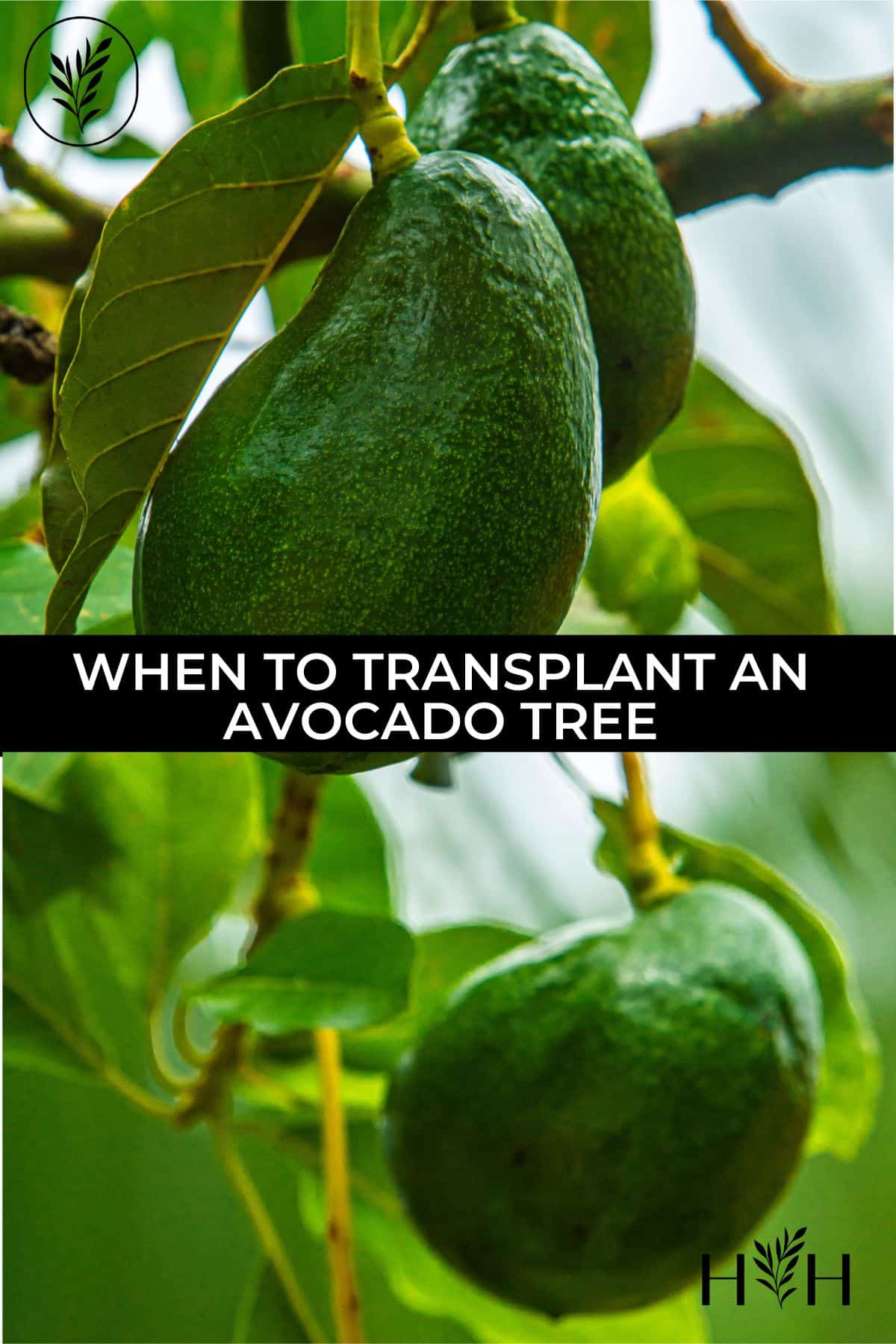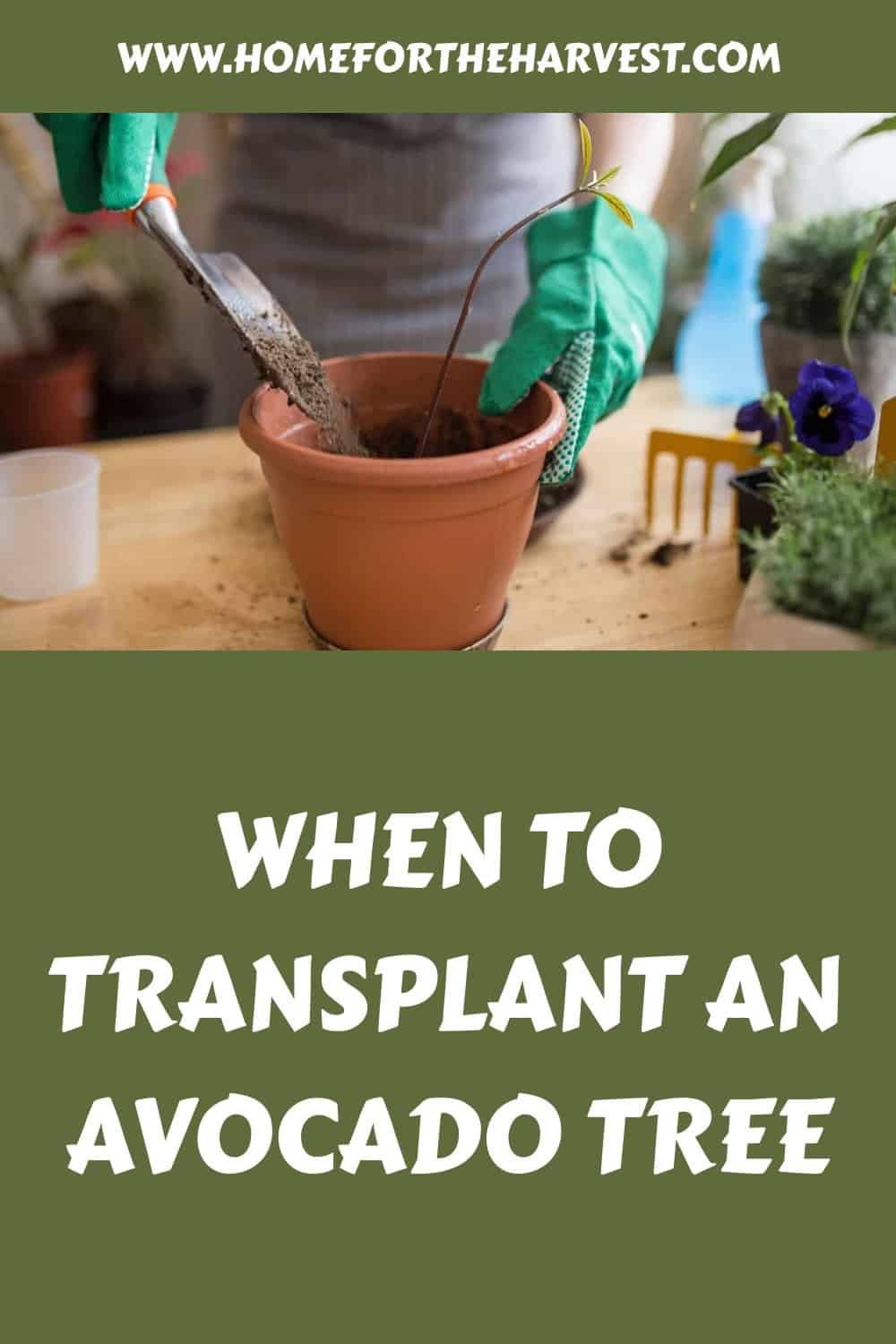Wondering when to transplant your avocado tree? While these plants are pretty hardy, there are some better times to repot or move them.
The best time of year to transplant an avocado tree is in the spring, typically from February to May. This is when the tree is actively growing, but before the hottest summer days arrive. Summer planting can cause heat stress in newly-transplanted trees that do not yet have feeder roots established, but fall planting can be successful. Sprouted avocado seeds indoors can be transplanted any time of year (although spring is best), especially if they are no longer thriving in water alone.
Read on to learn all about when to transplant avocado trees!
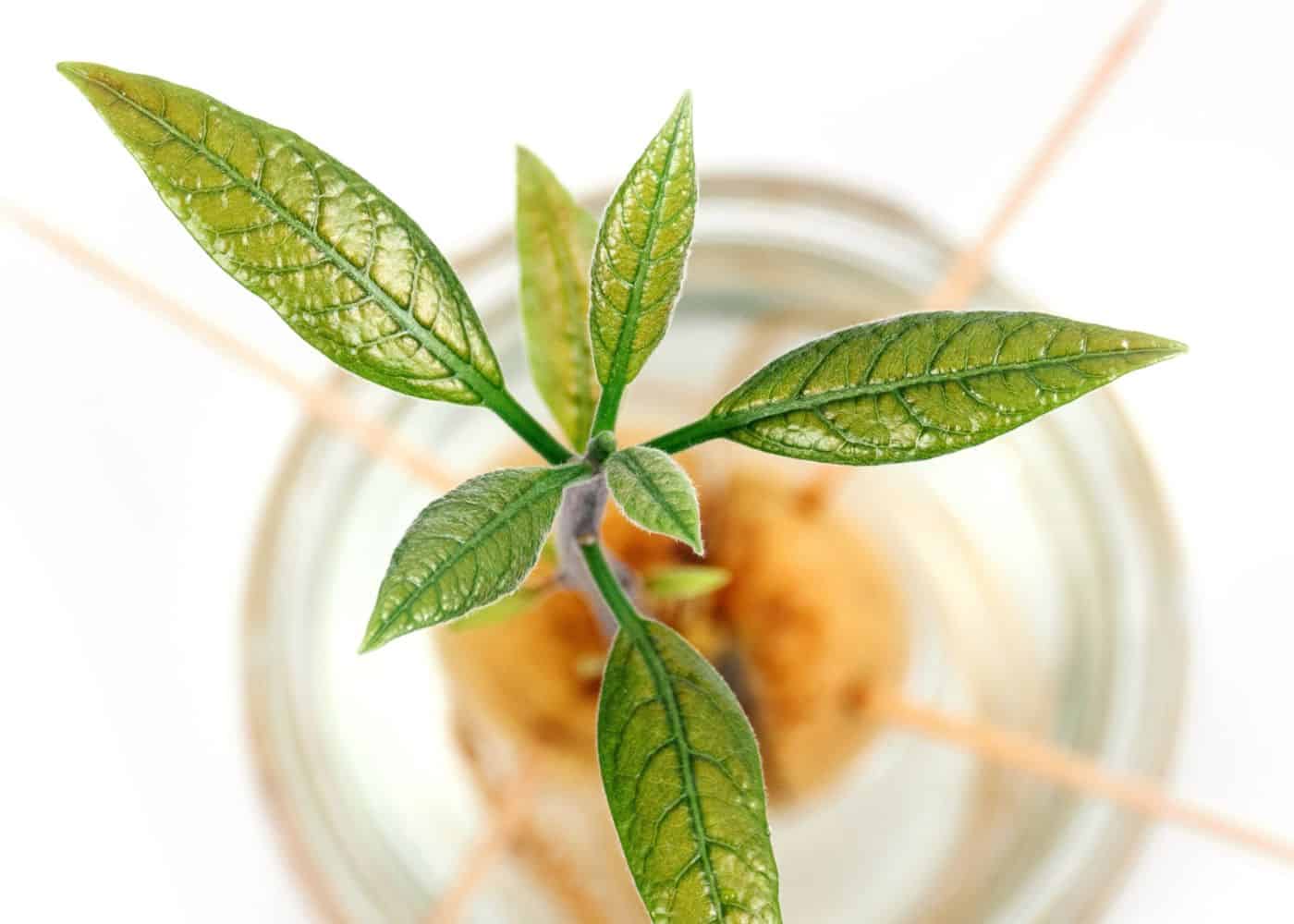
When to transplant sprouted avocado seeds from water to soil
Growing an avocado tree from a seed is a fun at-home project that will reward you with a beautiful houseplant with dark green, leathery leaves. The simple process requires using toothpicks to suspend an avocado seed over a water-filled glass; you must submerge about 1 inch of the seed’s broad end in the water.
Typically, the plant’s roots appear first, followed by stems and leaves. You can transplant your baby avocado tree to the soil when the roots are at least 2 to 3 inches long. However, you can safely grow an avocado sapling in water for more than a year or as long as its leaves look healthy.
But eventually, the young avocado tree needs to be transplanted into soil, whether in a pot or outdoors. The avocado tree is a fairly sturdy plant. As such, transplanting it is reasonably straightforward.

If the leaves begin to curl or develop brown tips, a move to soil is necessary. First, transplant the avocado tree into store-bought potting mix in a 6 to 8-inch pot. Place the seed in the center of the pot, near the surface of the soil. Keep the avocado tree well-watered and in a sunny location, preferably an east- or west-facing window. Then get ready to watch your avocado tree grow fast.
“Do not grow seedlings from supermarket avocados, for several reasons: Avocados do not come true from seed; undrafted seedlings may take up to 10 to 15 years to bear fruit; and salty irrigation water can cause moderate to severe leaf tip burn on these plants.”
Avocadoes, Texas A&M Agrilife Extension
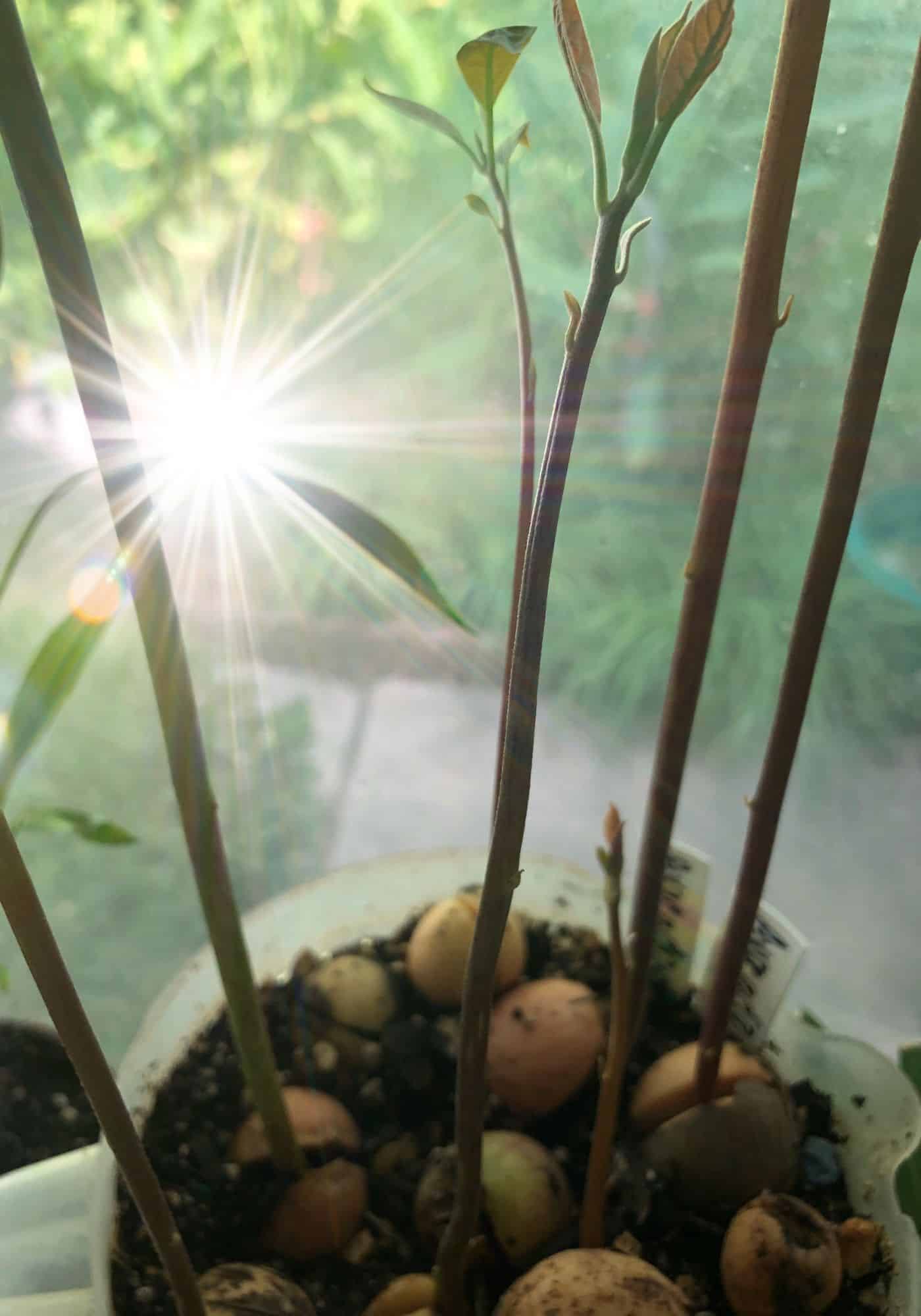
When to transplant avocado saplings into larger containers
For indoor avocado plants, any time of year is fine for transplanting saplings from a small to a large container. If you notice that the roots of the plant are filling up the pot, you’ve seen a sure sign that your plant needs a larger container. While early spring is the best time for repotting, you can repot your tree in other seasons if it truly needs the space.
No matter the size of the pot you choose, be sure it has drainage holes. It should be easy for you to stick your finger into the soil to make sure the soil isn’t overly soggy, a condition that could lead to root rot. After transplanting your avocado tree, give it lots of water and place it in a brightly lit location.
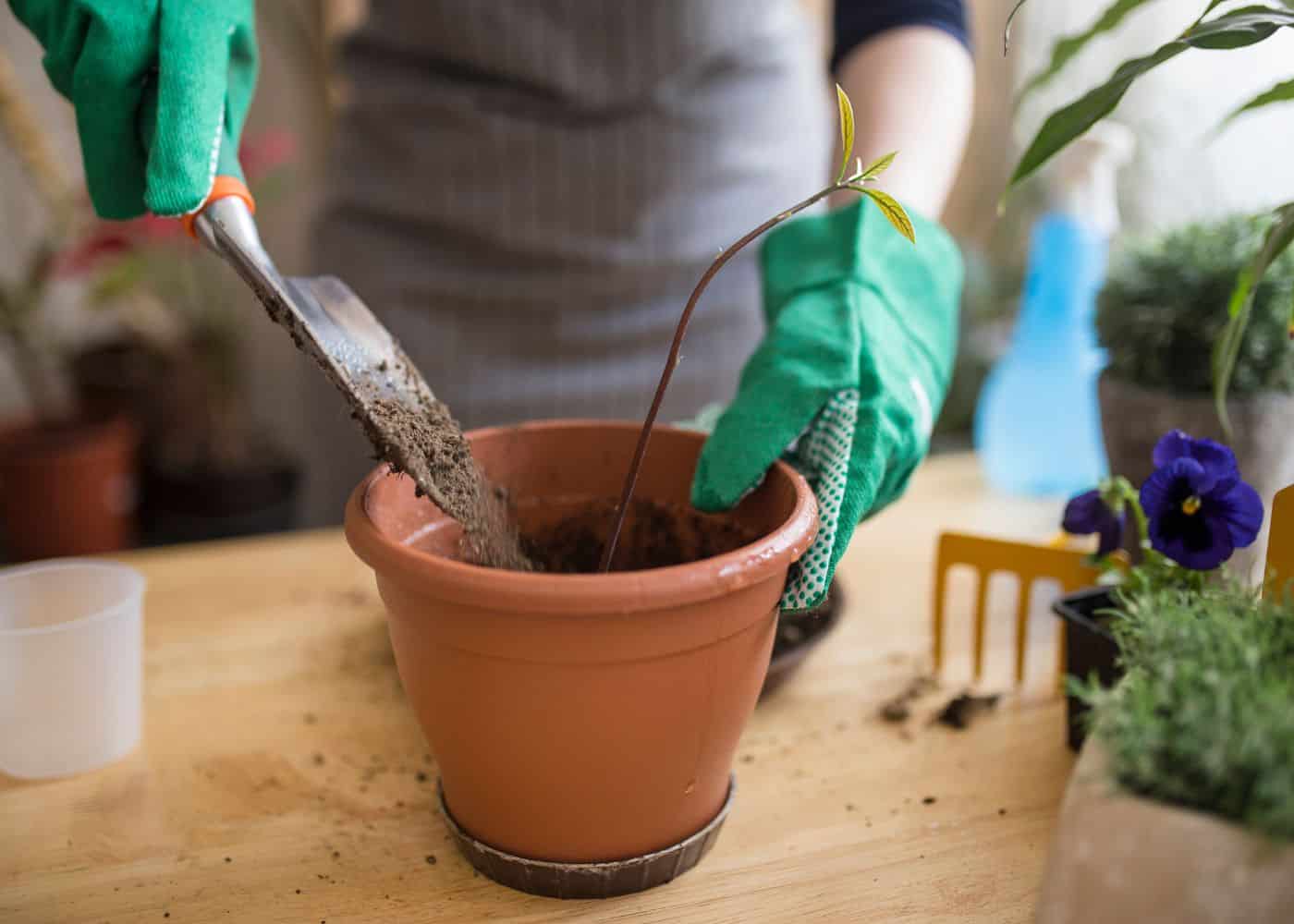
Growing an avocado tree in a large pot is ideal when you live in an area with cold winters but warm summers. You can move your avocado tree outside, where it can benefit from plenty of sunshine. Try to place your tree on a sunny side of the house, typically the south or southeast side. With this placement, your tree will also get protection from cold north winds at night.
When to transplant avocado trees outdoors
If you live in an area where avocado trees can grow all year outdoors — namely in USDA growing zones 9 through 11 — you can plant your young avocado tree outside, in the ground. The ideal time to transplant avocado trees outdoors is in the spring.
“In the best case scenario trees are planted from February to May, but depending on the area they can be planted at other times, as well.”
Science-Based Solutions for Ventura County’s Communities, Farms and Environment, University of California
Pick a spot for your tree at least 10 to 15 feet away from your house, and try to plant the tree 20 to 30 feet from other large trees. If you’re planting multiple avocado trees, the suggested planting distance between trees is 18×22 feet, particularly if you’re counting on harvesting fruit. The trees typically start to crowd each other in about eight years, and removing some trees is required.
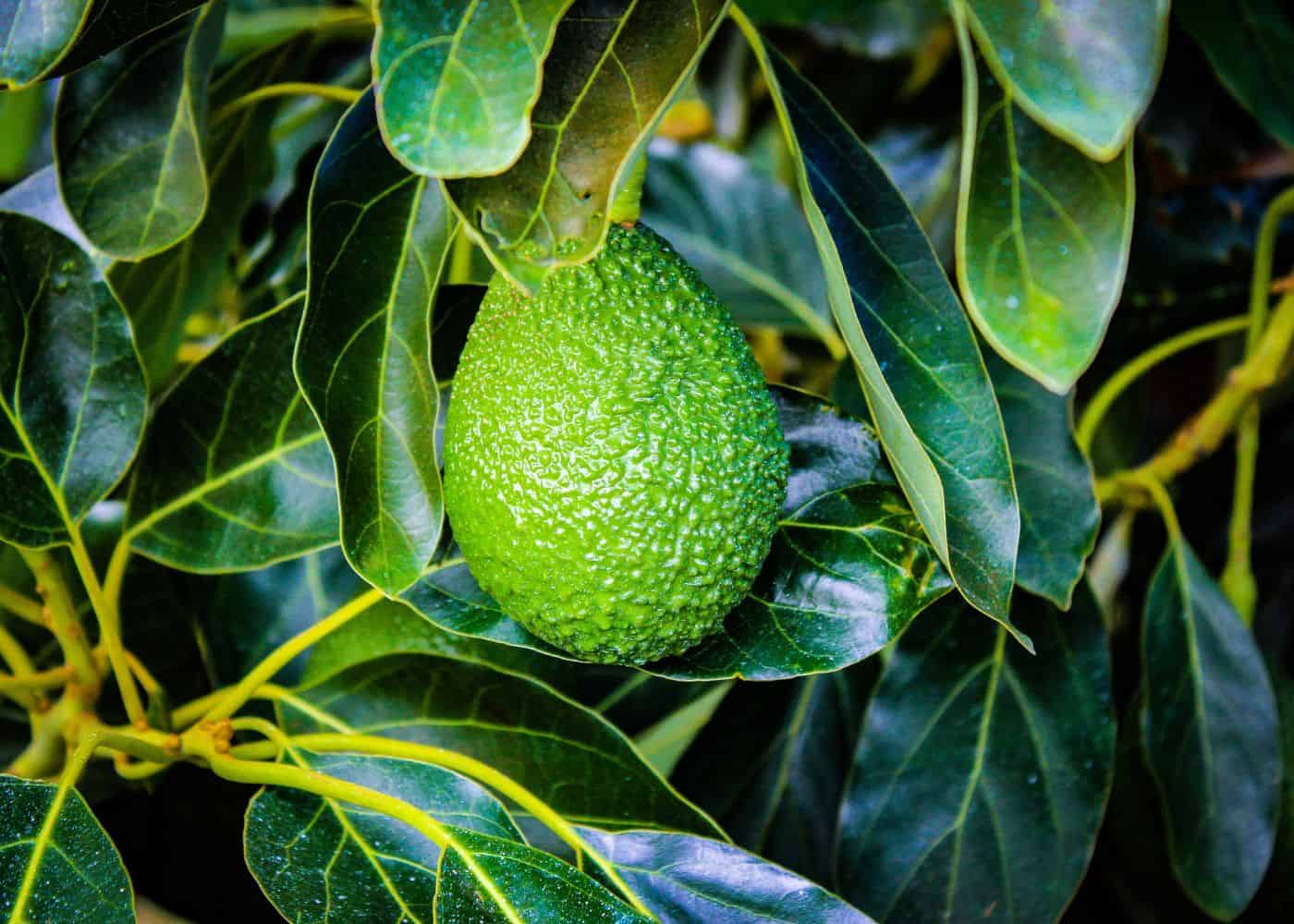
Avocado trees need well-aerated soil. Take the time to use a core aerator around the whole area prior to planting. Also, avocado trees flourish when you add coarse woody mulch to the surface, which you can get at a local garden center.
“Because salinity can injure avocados, have the soil and irrigation water tested before planting. If salinity is a problem, use a West Indian variety as a rootstock, which will tolerate the salinity better. Mexican varieties in particular are not salt tolerant and may need to be grafted if salinity is a potential problem.”
Avocadoes, Texas A&M Agrilife Extension
Avocado trees are beautiful, hardy plants that you can grow at home. Whether your avocado tree is a cherished houseplant or a beloved bearer of fruit outdoors, knowing when to transplant avocado trees will help you enjoy your green leafy friend for years to come.
FAQs
What’s the best time of year to transplant avocado trees?
Spring is the best time of year to transplant avocado trees. This is typically during the months of February-May in most warm climates. Transplanting can also be quite successful in the fall or winter, but summer transplants are often affected by heat stress.
When is avocado tree transplant shock most common?
Transplant shock of avocado trees is most common in larger trees that are transplanted in the heat of summer. This is especially true if the tree is not watered very frequently before and after being moved. Soil tends to dry out more quickly in containers, but sandy soil in the ground can also dry out very quickly, and so newly-transplanted trees will require frequent watering.
Can you transplant a mature avocado tree?
It is possible to transplant a mature avocado tree, but it tends to require specialized equipment. A large tree spade is most commonly used to move established trees.
This is a truck with a conical digger that first creates a new cone-shaped hole for the tree. The tree spade then digs up a cone of soil around the base of the avocado tree and transports it to the new hole. The tree may experience transplant shock and will require frequent watering.
My repotted avocado plant is wilting! Why?
Repotting plants like indoor avocadoes can often lead to the plant wilting within hours of being placed in its new pot. This is normal.
Ensure you’ve used high-quality organic potting soil and have watered the tree well after the transplanting process. Check that extra water is able to drain out easily so the tree isn’t sitting in a puddle of water. Keep the newly-repotted tree out of direct sunlight for a day or two to give it a bit of a rest.


